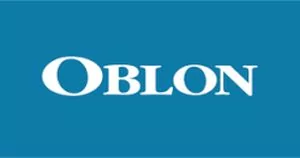Re: US2016/0331260A1 "Asystole detection for cardiopulmonary resuscitation", Applicant Koninklijke Philips N.V.
In a Final Action (1), the Examiner rejected claims 1-20 under 35 U.S.C. Section 103 as being unpatentable over Didon (US2011/0224746A1) and Weil (US5,957,856). The application went before the PTAB and a decision was rendered (Appeal 1) which affirmed the adverse decision of the Examiner on December 2, 2020. The rejections in the Final Action (2) hinged on the word "or" in the independent claims.
Following that decision, the Appellant reopened prosecution and further amended the claims.
The amended claims include a patient monitoring device, claims 1-11, a patient monitoring device controller, claims 12-15 and a method, claims 16-20.
Claim 1. A patient monitoring device, comprising:
an ECG monitor operable to monitor a corrupted ECG waveform; and
a controller operably connected to the ECG monitor to classify the corrupted ECG waveform as one of a non-shockable asystole rhythm, or a potentially shockable non-asystole rhythm,
wherein the controller is configured to detect a presence or an absence of an asystole rhythm within a segment of the corrupted ECG waveform as indicated by at least one time domain feature and at least one frequency domain feature extracted by the controller from the segment of the corrupted ECG waveform,
wherein the controller is further configured to classify the corrupted ECG waveform as the non-shockable asystole rhythm responsive to a detection by the controller of the presence of the asystole rhythm within the corrupted ECG waveform, and
wherein the controller is further configured to classify the corrupted ECG waveform as the potentially shockable non-asystole rhythm responsive to a detection by the controller of the absence of the asystole rhythm within the corrupted ECG waveform.
Definition 1: Asystole means the electrical system of the heart has stopped working and there is no heartbeat, so defibrillation should not be attempted to prevent damage the heart. Asystole is a non-shockable heart rhythm,
Definition 2: Defibrillation is an emergency treatment that uses an electrical shock to the chest to restore a normal heart rhythm.
Definition 3: The only shockable heart rhythms are ventricular fibrillation (v-fib) and pulseless ventricular tachycardia (VT).
The Appellant argued that "Didon does not describe or teach the first algorithm of Didon being capable of differentiating between a non-shockable asystole rhythm and a non-shockable pulseless electrical activity" because Didon's "first algorithm fails to determine a presence of a shockable ventricular fibrillation rhythm or a shockable pulseless ventricular tachycardia rhythm in the corrupted ECG waveform."
The Examiner responded that "the features upon which the Appellant relies (i.e., differentiating between a non-shockable asystole rhythm and a non-shockable pulseless electrical activity are not recited in the rejected claims".
In response, Appellant argued that "an ECG waveform can only be classified as one rhythm among a plurality of different shockable rhythms and a plurality of different non-shockable rhythms", and that "an ECG waveform having a non-shockable rhythm can be classified as a non-shockable asystole rhythm or a non-shockable pulseless electrical activity rhythm)" because "not all non-shockable rhythms include an asystole rhythm".
The Opinion states that the Appellant has the better position and agrees that Didon does not detect a non-shockable asystole rhythm and discloses using a defibrillator when the shockable rhythm is detected.
Upon the second appeal, the PTAB reversed the rejection of claims 1-15 and provided a new ground of rejection for claims 16-20 under 35 U.S.C. Section 103 as being unpatentable over Didon and Weil.
A copy of the Decision can be found HERE.
The content of this article is intended to provide a general guide to the subject matter. Specialist advice should be sought about your specific circumstances.


